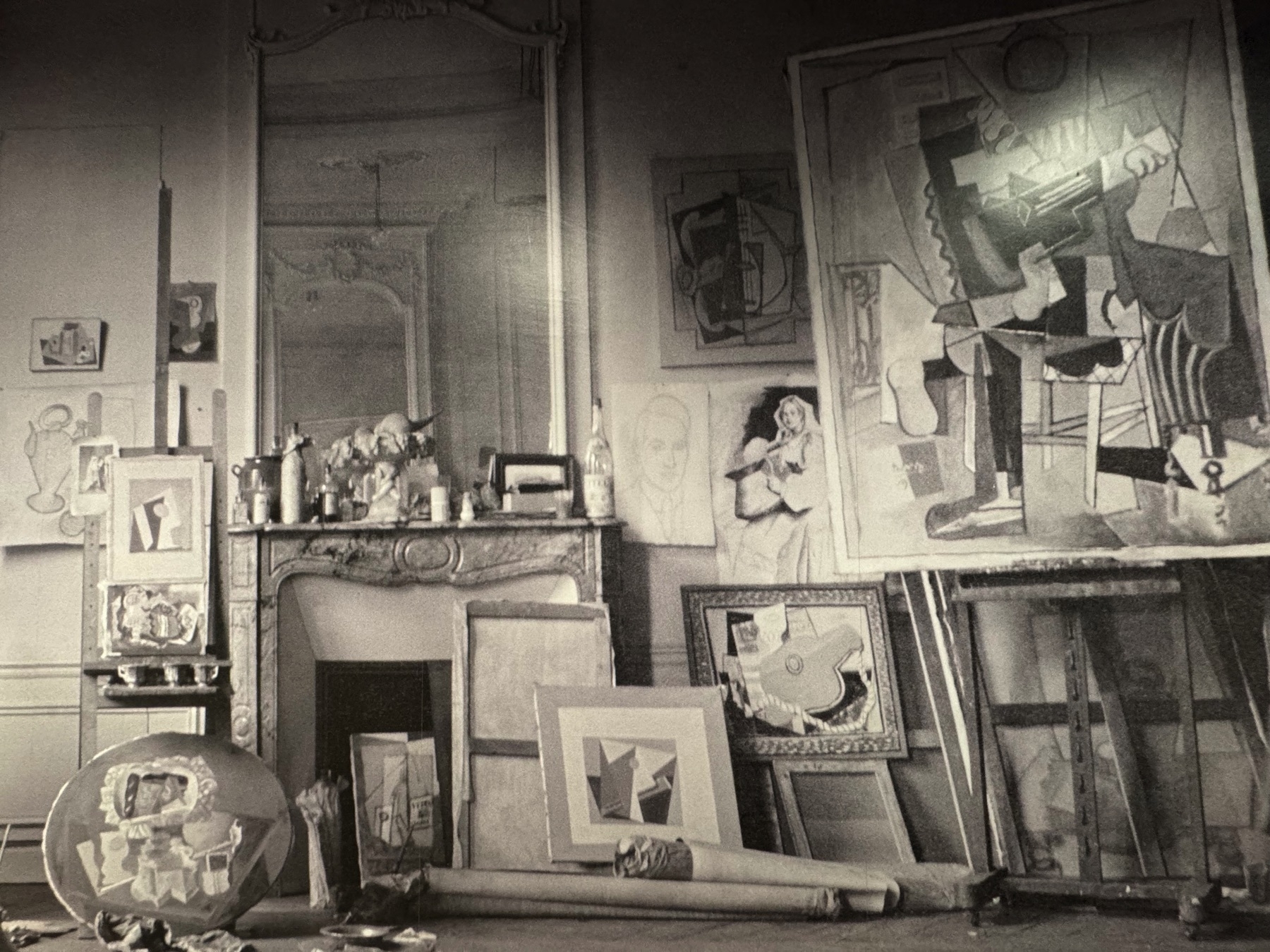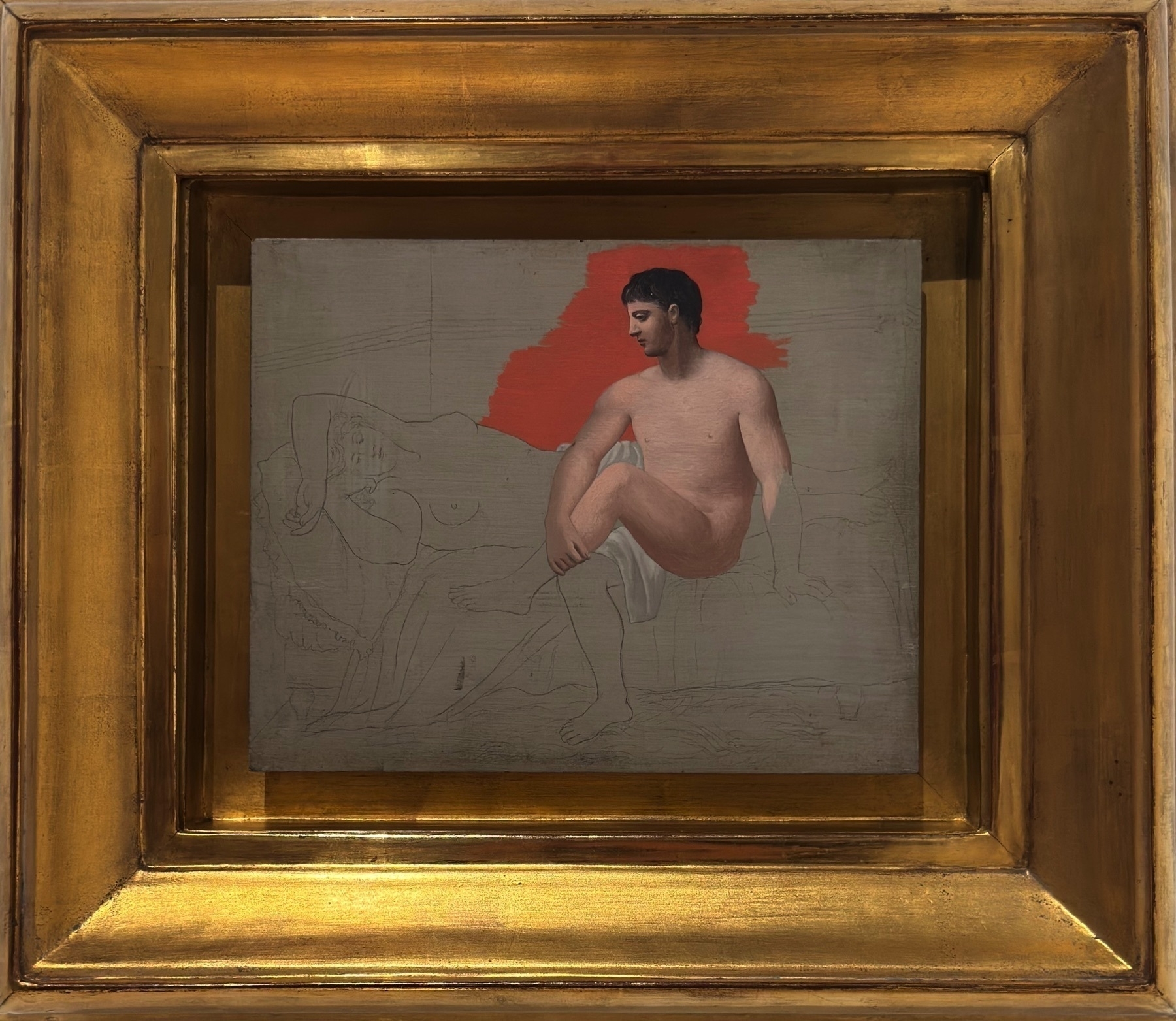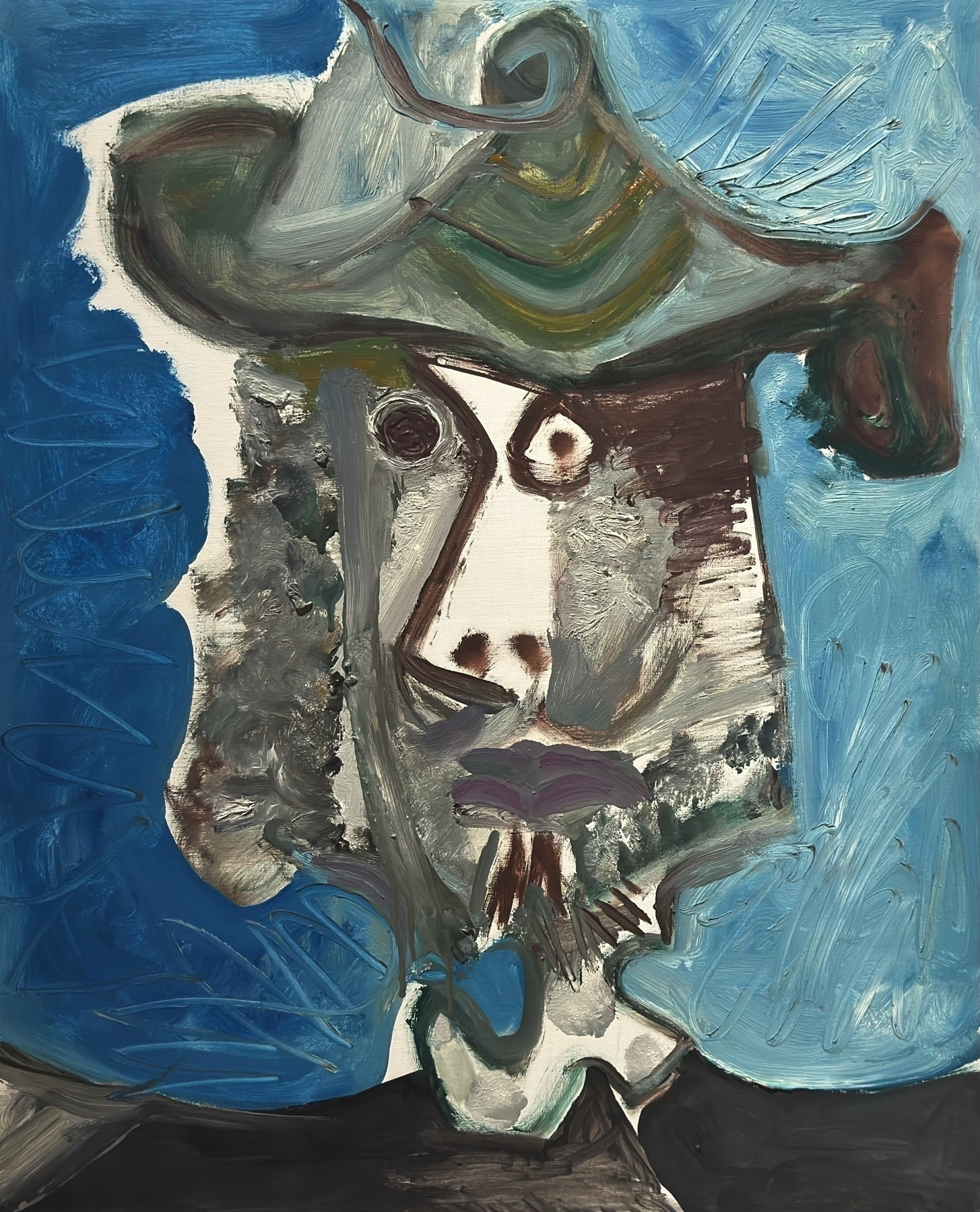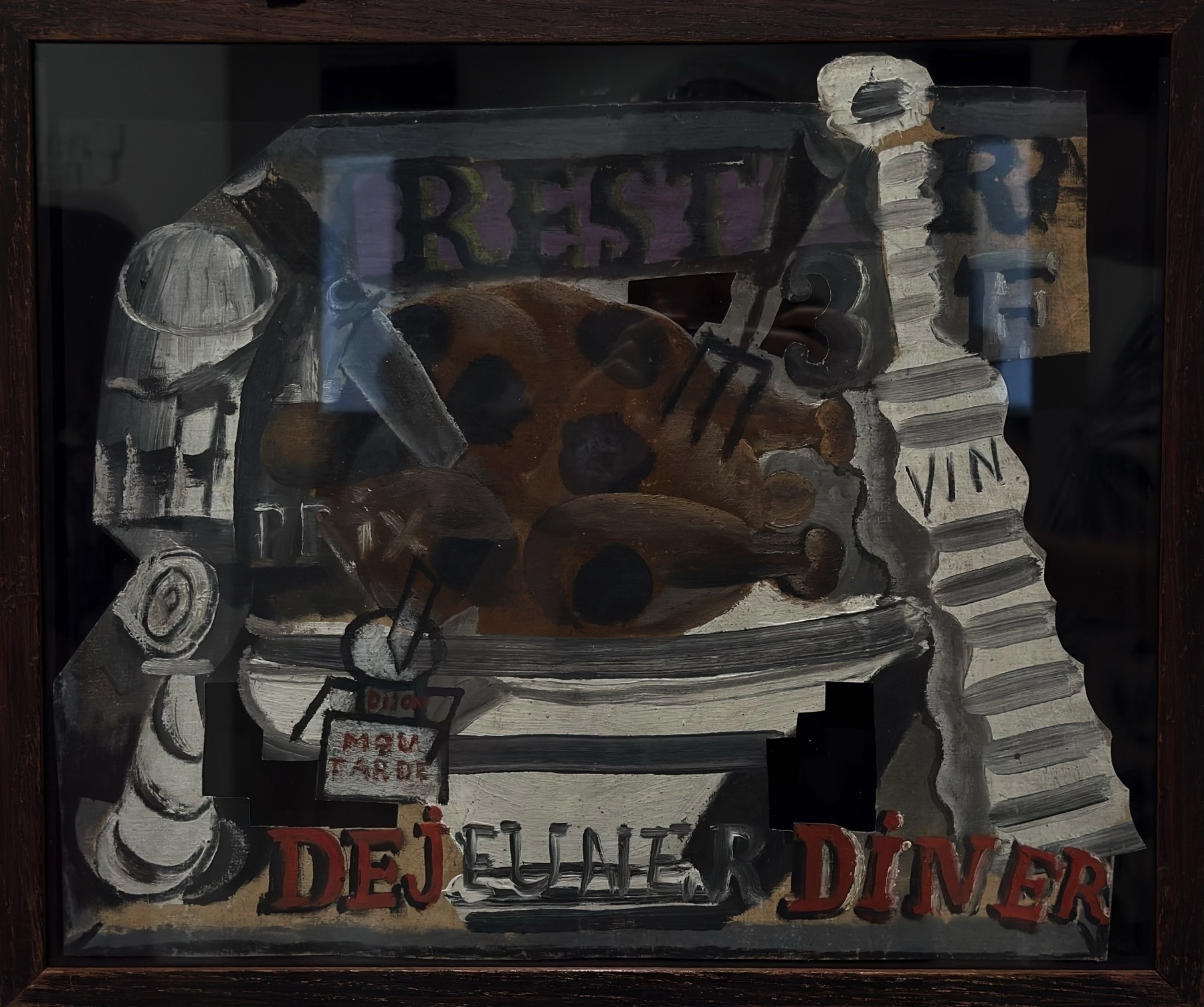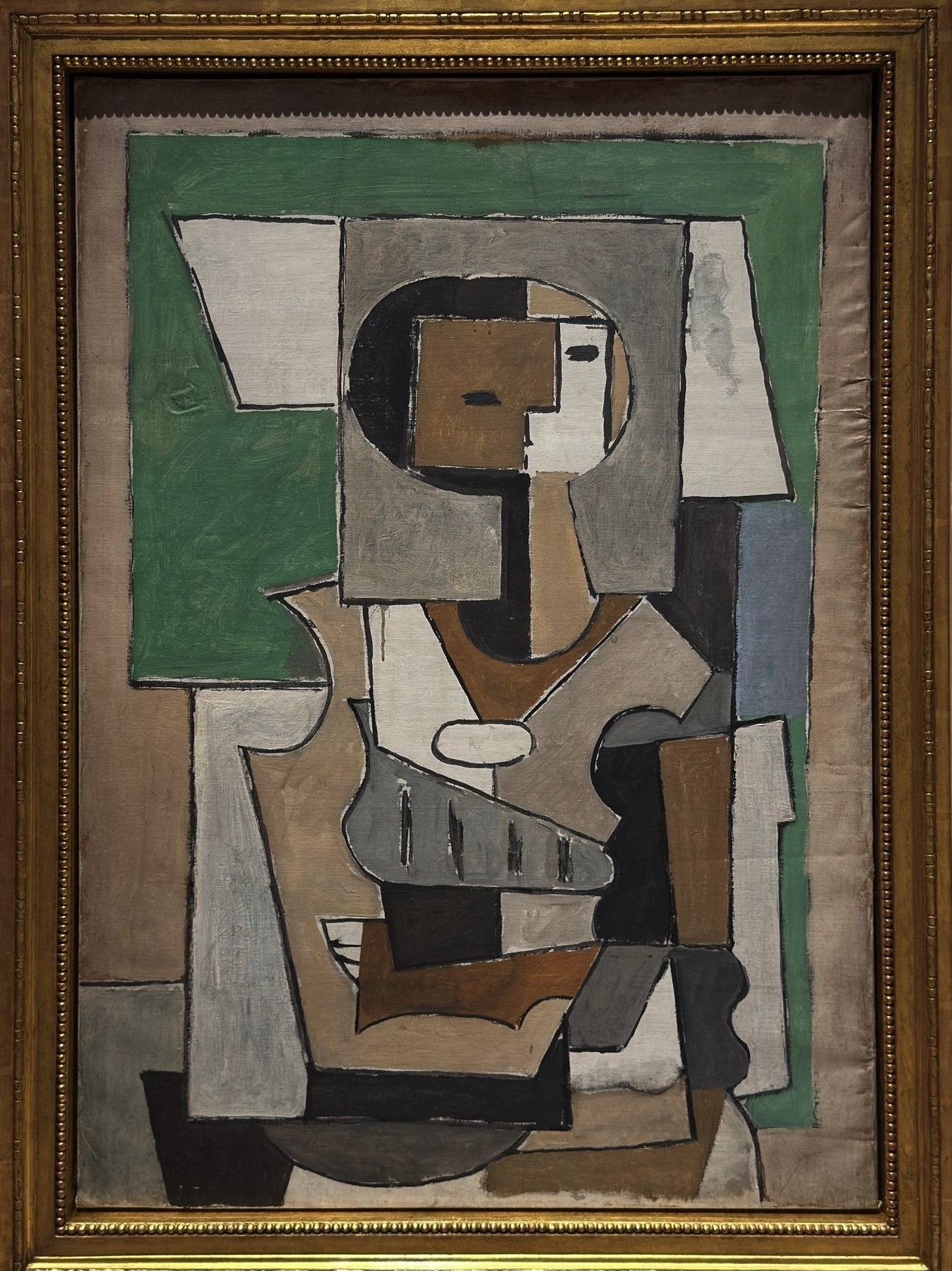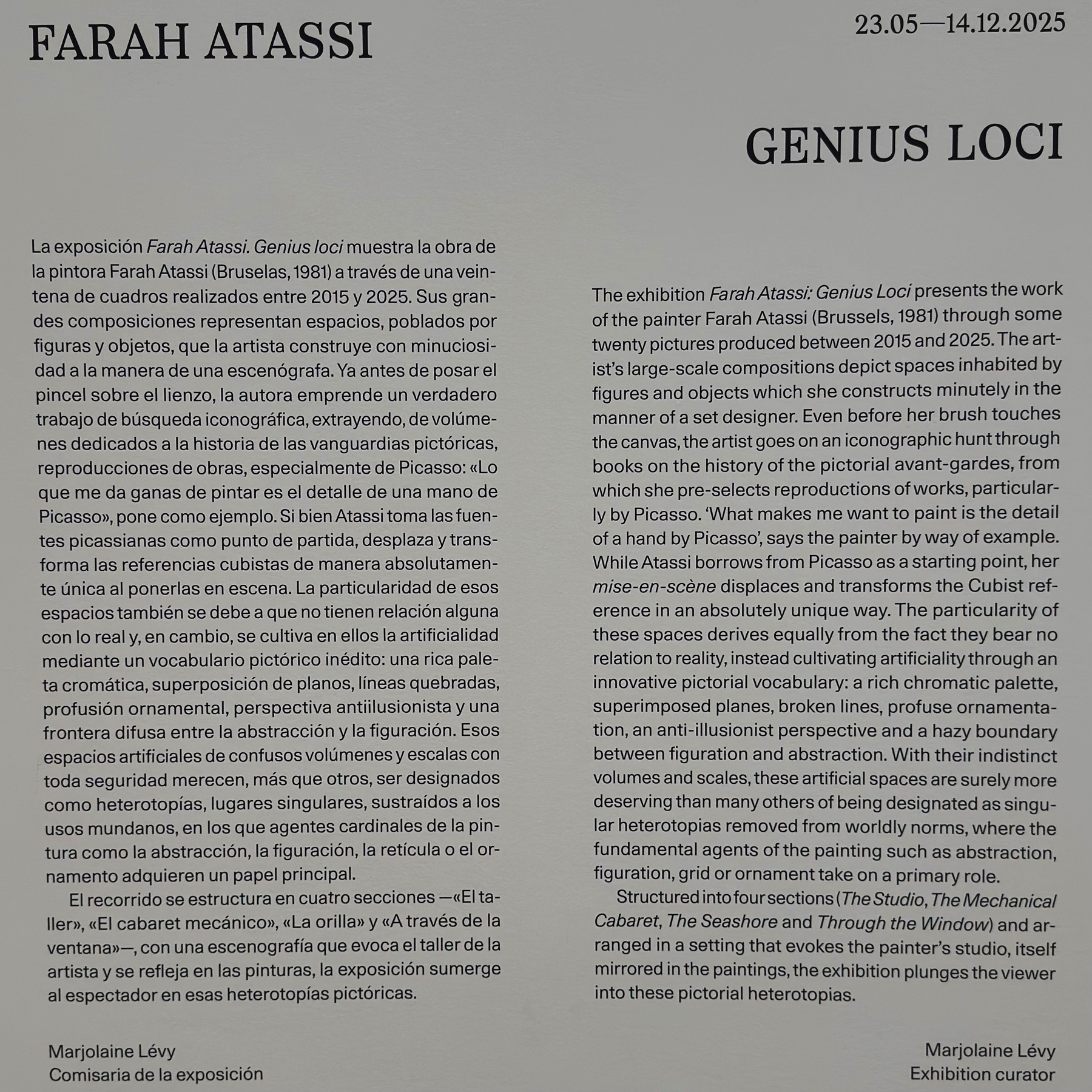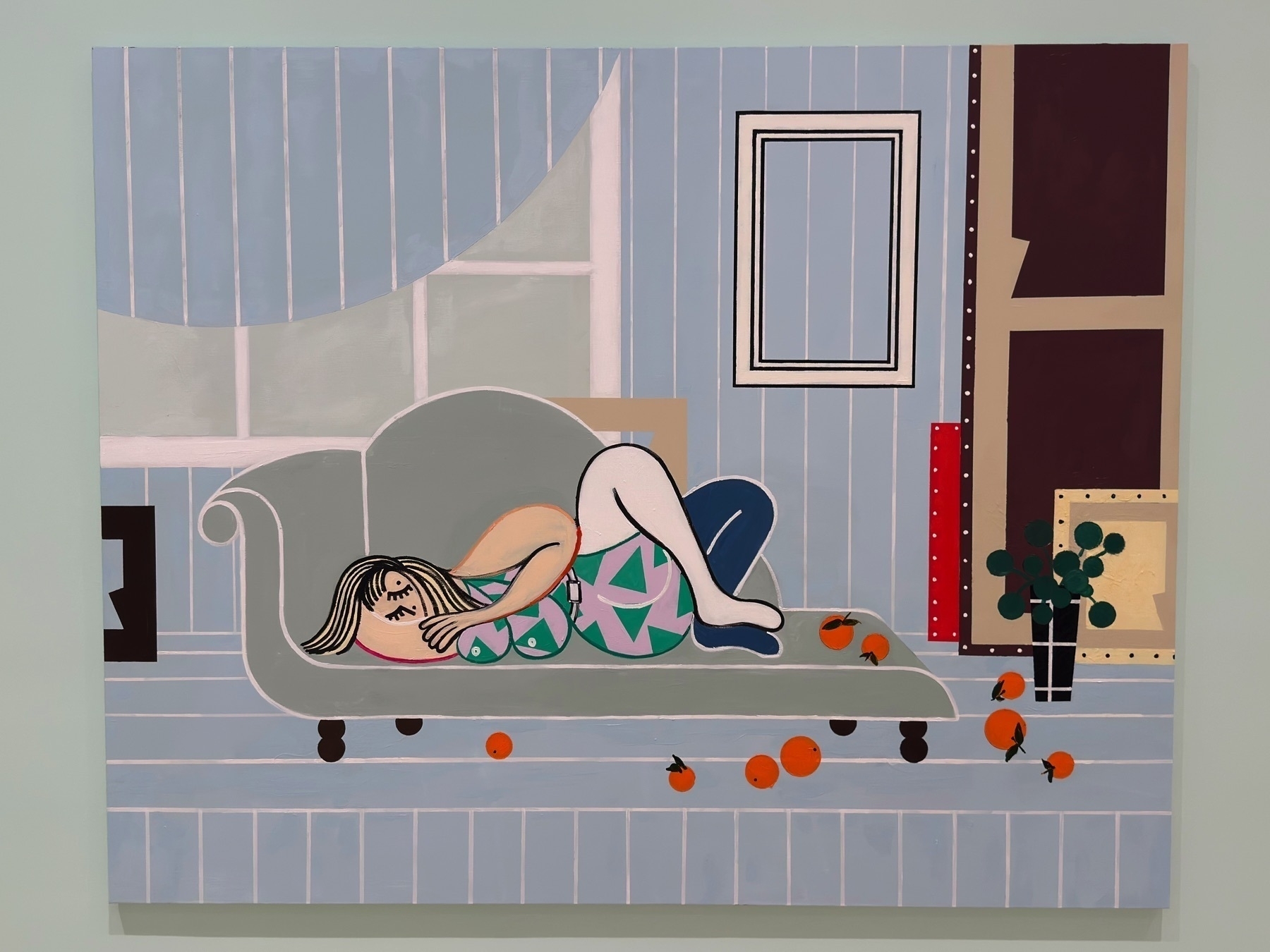On Friday we went to the Picasso museum—he was born in Málaga! It was great to see classics like Lola with a Doll, but I enjoyed the Man Looking at a Sleeping Woman and his Cubist portraits the most.
A new exhibit by Farah Atassi opened the same day. Her paintings echo some of Picasso’s styles.
